DCSMM - Directive Cadre sur la Stratégie pour le Milieu Marin
Type of resources
Available actions
Topics
INSPIRE themes
Keywords
Contact for the resource
Provided by
Years
Formats
Representation types
Scale
-
Distribution des gorgonaires Viminella flagellum observées pendant la campagne Videocor1 dans le canyon de Cassidaigne (L'Europe 2017, H-ROV Ariane). Données liées à la publication Fabri et al., 2019. https://doi.org/10.1016/j.pocean.2019.102172
-
Distribution des gorgonaires Callogorgia verticillata observées pendant la campagne VIDEOCOR_2017 dans le canyon de Cassidaigne (L'Europe 2017, H-ROV Ariane). Données liées à la publication Fabri et al., 2019. https://doi.org/10.1016/j.pocean.2019.102172
-
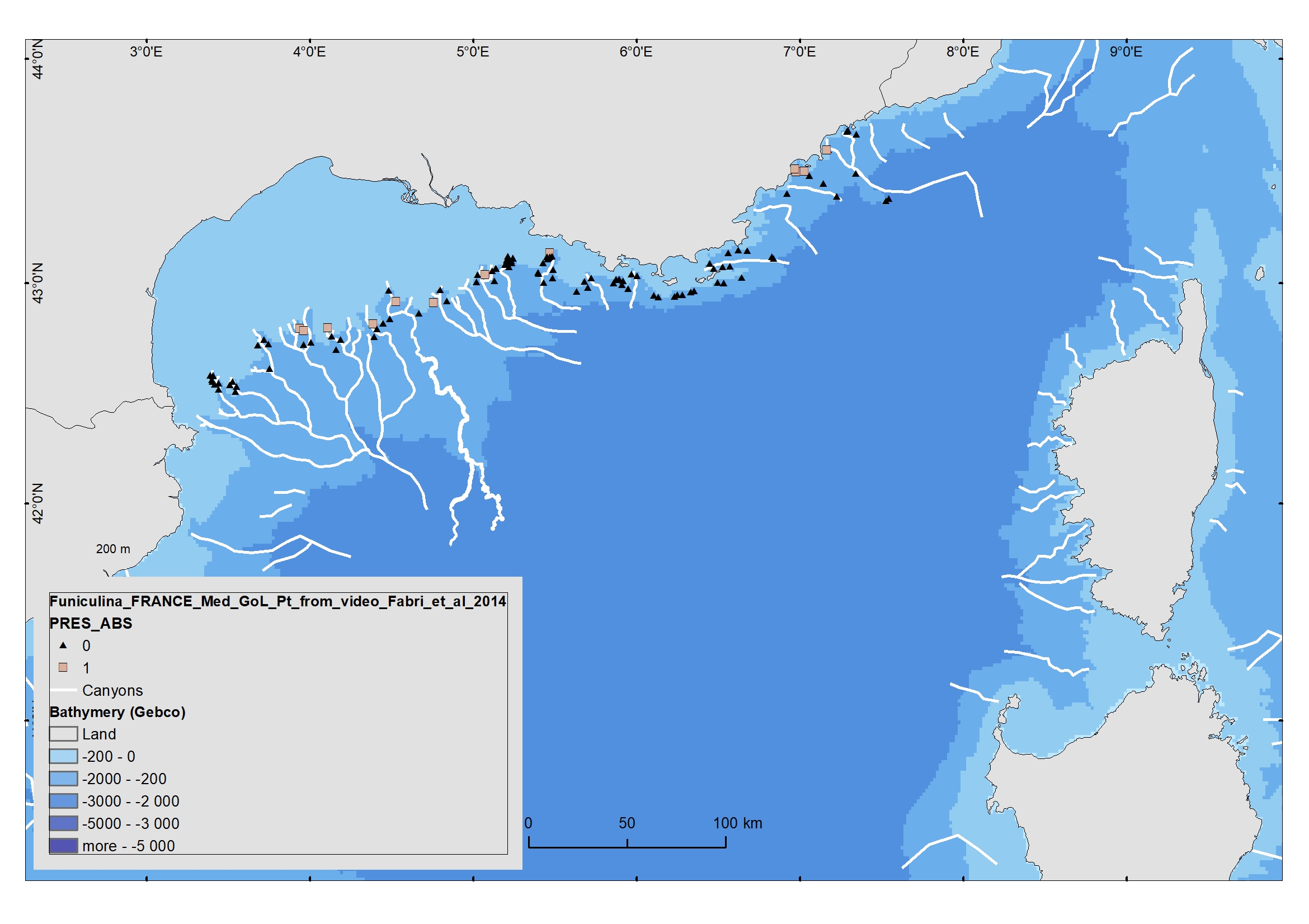
Soft mud facies with Funiculina quadrangularis is an essential habitat for certain crustacean species (Parapenaeus longirostris and Nephrops norvegicus). These habitats are potentially vulnerable as they are targeted by fisheries. These VME fauna seem to have been swept away by repeated trawling. Vulnerable Marine Ecosystems (VME) in the deep Mediterranean Sea have been identified by the General Fisheries Commission for the Mediterranean as consisting of communities of Scleractinia (Lophelia pertusa and Madrepora oculata), Pennatulacea (Funiculina quadrangularis) and Alcyonacea (Isidella elongata). This dataset concerns video data recorded in the heads of French Mediterranean canyons. Quantitative observations were extracted from 101 video films recorded during the MEDSEACAN cruise in 2009 (Aamp/Comex), in addition to 12 Ifremer dives. Species recognized in the video films were recorded from 180 to 700 m depth, and were mapped using GIS. Funiculina quadrangularis was rarely observed, being confined for the most part to the Marti canyon (Hérault). This dataset is linked to the pulication Fabri et al, 2014. https://doi.org/10.1016/j.dsr2.2013.06.016
-
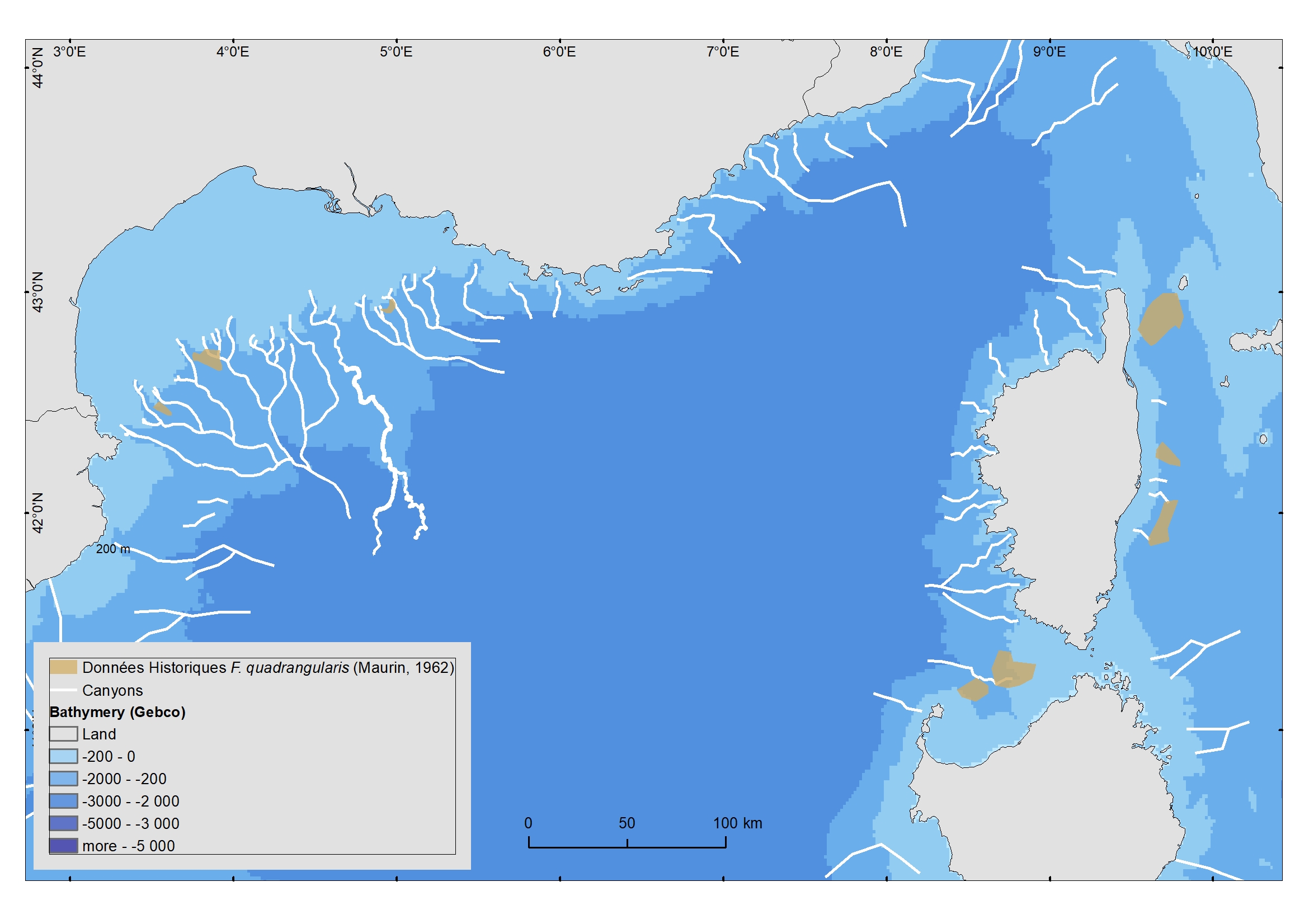
The distribution of the Vulnerable Marine Ecosystem Funiculina quadrangularis (Pennatulacea) was digitalized from a document edited in 1962 (Maurin, 1962).
-
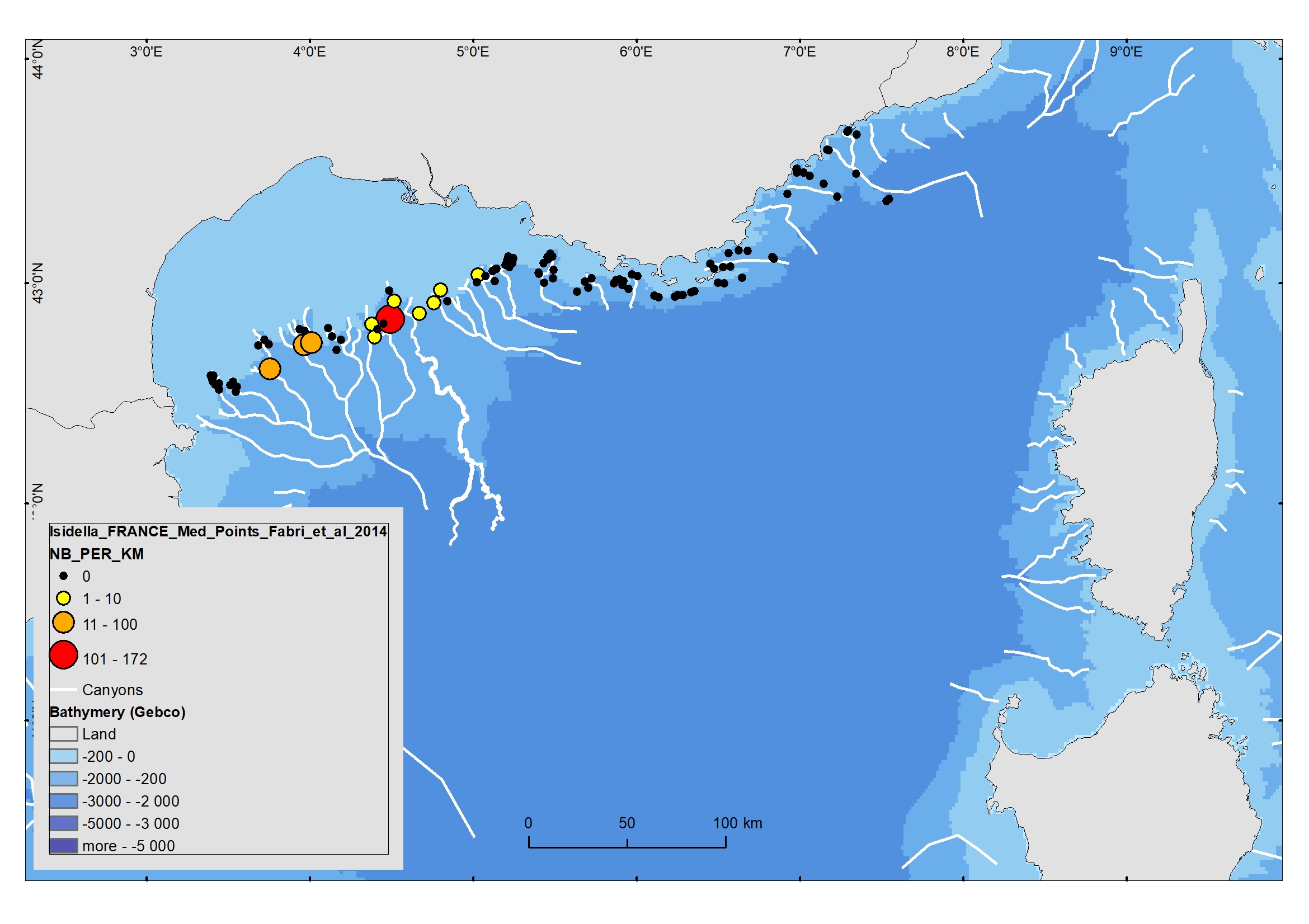
Compact mud facies with Isidella elongata is a relevant habitat for red shrimps (Aristeus antennatus and Aristaeomorpha foliacea). These habitats are potentially vulnerable as they are targeted by fisheries.These VME fauna seem to have been swept away by repeated trawling. Vulnerable Marine Ecosystems (VME) in the deep Mediterranean Sea have been identified by the General Fisheries Commission for the Mediterranean as consisting of communities of Scleractinia (Lophelia pertusa and Madrepora oculata), Pennatulacea (Funiculina quadrangularis) and Alcyonacea (Isidella elongata). This dataset concerns video data recorded in the heads of French Mediterranean canyons. Quantitative observations were extracted from 101 video films recorded during the MEDSEACAN cruise in 2009 (Aamp/Comex), in addition to 12 Ifremer dives. Species recognized in the video films were recorded from 180 to 700 m depth, and were mapped using GIS. Isidella elongata was abundant in three canyons of the Gulf of Lion (Bourcart, Marti, Petit-Rhône). This dataset is linked to the pulication Fabri et al, 2014. https://doi.org/10.1016/j.dsr2.2013.06.016
-

Surface connue occupée par les coraux d’eaux froides Madrepora oculata (Scleréctiniaires) dans le canyon de Cassidaigne, Méditerranée Ouest. Les surfaces ont été mesurées d’après les images enregistrées au cours de la campagne VIDEOCOR1 par le H-ROV Ariane (L’Europe, 2017). Les images ont été utilisées pour réaliser des modèles 3D de chaque zone. Chaque colonie de Madrepora oculata a été positionnée à la main sur les modèles géoréférencés. Une couverture en 3-Dimensions a ainsi pu être mesurée. La couverture en 2-Dimensions a été mesurée sur un plan horizontal après transfert des points dans un SIG. La pression anthropique visible est aussi indiquée. Données liées à la publication Fabri et al., 2019. https://doi.org/10.1016/j.pocean.2019.102172
-
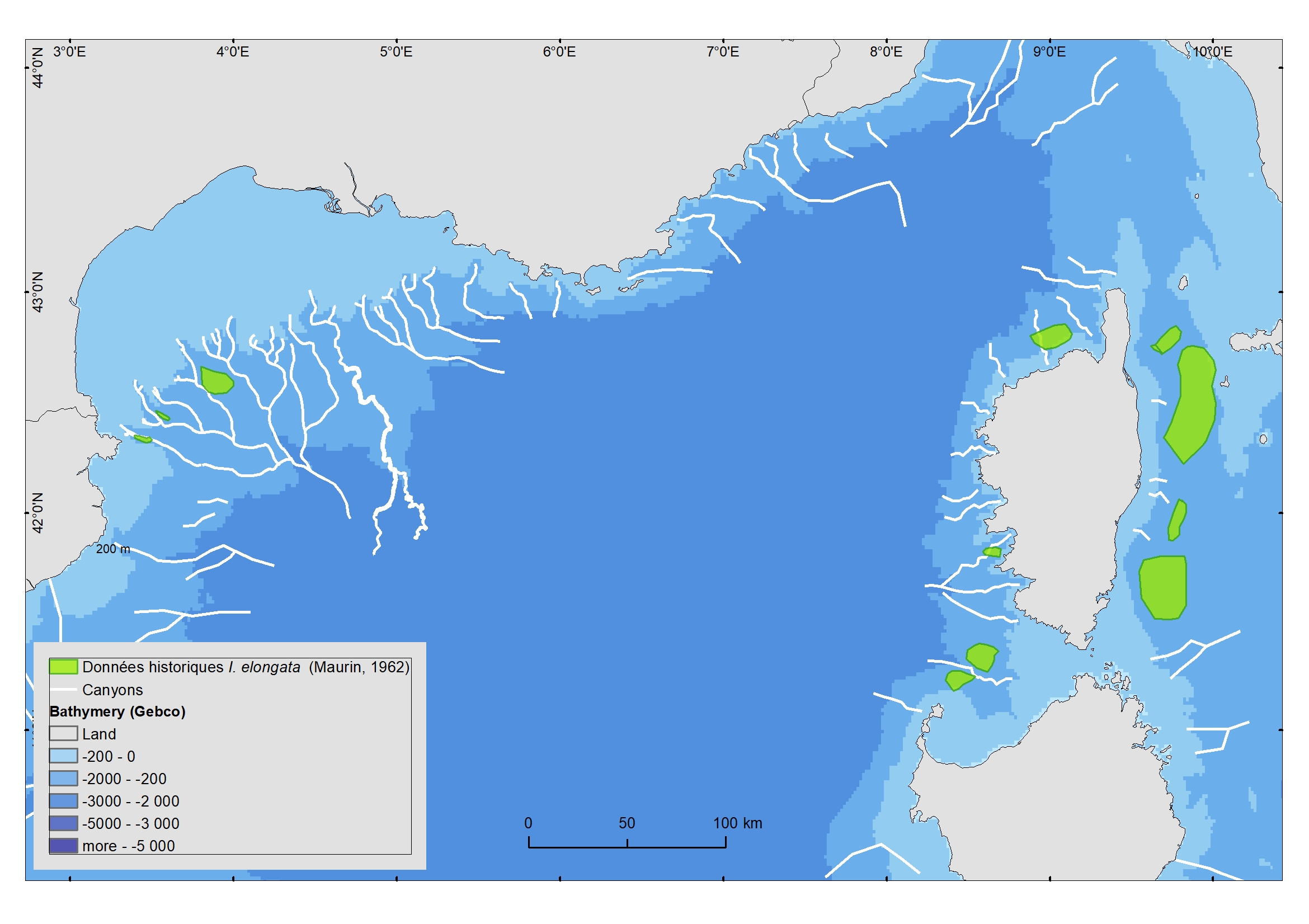
The distribution of the Vulnerable Marine Ecosystem Isidella elongata (Alcyonacea) was digitalized from a document edited in 1962 (Maurin, 1962).
-

Distribution connue de corail rouge Corallium rubrum (Alcyonacea) dans le canyon de Cassidaigne, Méditerranée Ouest. Les colonies de corail rouge ont été filmées/photographiées au cours de la campagne VIDEOCOR1 par le H-ROV Ariane (L’Europe, 2017). Les images ont été utilisées pour réaliser des modèles 3D de chaque zone. Chaque colonie de Corallium rubrum a été positionnée à la main sur les modèles géoréférencés. Données liées à la publication Fabri et al., 2019. https://doi.org/10.1016/j.pocean.2019.102172
-
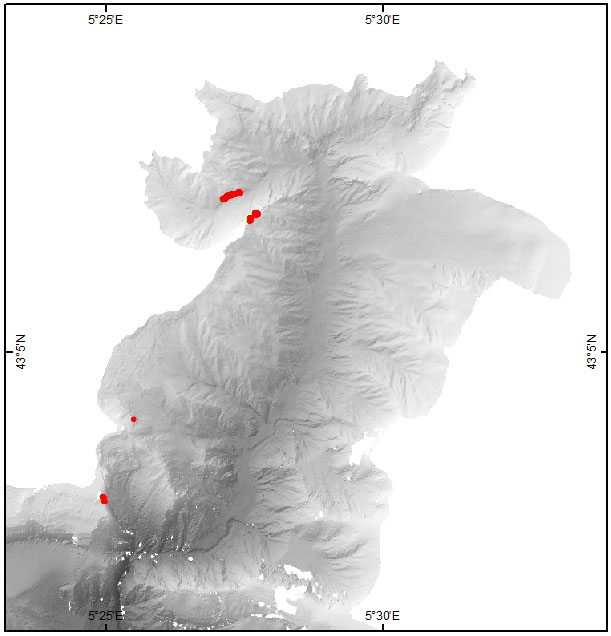
Distribution des coraux d’eaux froides Madrepora oculata (Scleréctiniaires) obtenue pendant la campagne VIDEOCOR1 en 2017 dans le canyon de Cassidaigne, Méditerranée Ouest. Les colonies de coraux ont été filmées/photographiées au cours de la campagne VIDEOCOR1 par le H-ROV Ariane (L’Europe, 2017). Les images ont été utilisées pour réaliser des modèles 3D de chaque zone. Chaque colonie de Madrepora oculata a été positionnée à la main sur les modèles géoréférencés. Données liées à la publication Fabri et al., 2019. https://doi.org/10.1016/j.pocean.2019.102172
 Mon GéoSource
Mon GéoSource